It seems like it’s only been in the last year or so that I’ve become enamored with preparing beef tenderloin for guests. Probably my reluctance in years past was that I truly didn’t know how to roast it. More specifically, I didn’t know how to prepare it perfectly. Then, of course, there’s the cost factor. It is one of the most expensive cuts of meat out there. I wasn’t about to invest in a $50 roast to serve an overcooked, tough, or dry piece of meat to guests.
My mother, bless her heart, a product of the depression, probably never, EVER purchased or roasted a tenderloin. Growing up, even when we went out to dinner I wasn’t allowed to order steak (too expensive). For many years my mother and I shared a meal, even when we went out, in order to save money. I so well remember when I was about 17 or 18, I finally asked my mother if I could have my very OWN steak, on those occasions when she’d buy T-bones to grill at home.
Mostly, though, my mother would buy a rump roast and bake that for guests. With no sauce. It had nothing to elevate it to something edible, in my book. Rump roasts are one of those that need dry heat, but when you’re done, it’s nothing but a very dry piece of meat. And not all that tender, either. I would venture to guess that I may have made a rump roast once in my complete adult life. It was just as I’d remembered. Dry, tough, like shoe leather.
I believe I ate chateaubriand for the first time when I was in my mid-20’s. I thought it was heavenly, but it was never in the budget to buy it to prepare at home, and here I am in my 60’s and it’s still elusive, a bit.
But, this last week I was served a beef tenderloin that came from a regular grocery store. I was positively amazed how tender and delicious it was. Usually when I buy meat – especially for a company dinner – I go to a meat market, or an upscale grocery store, and will pay top dollar. It’s possible this particular roast from a grocery store was a fluke, but I’m going to have to try them and see if it’s their normal quality. (It happened to have been Albertson’s, in case anyone is interested.)
As I’ve mentioned before in my blog, I’m in love with meat thermometers – the newer kinds that measure both oven and meat temps. I can rely on it telling me when the meat has just reached the right temp.
Now let’s get to the recipe. This roast is seasoned, browned, then crusted with a pile of fresh herbs before baking in the oven. You use the same saute pan to prepare the cabernet wine sauce. Then you make a horseradish cream sauce too. The meat needs to rest a bit before you slice it up to serve, so there’s plenty of time to prepare the wine sauce and the horseradish cream. That’s it. It was just scrumptious. Certainly not low in calorie, however. But if you’d like a foolproof recipe for tenderloin, this is it.
printer-friendly PDF
Herb Crusted Beef Tenderloin
Recipe By: Deb Buzar, professional chef
Serving Size: 10
5 pounds beef tenderloin
1 teaspoon salt — or to taste
1 teaspoon freshly ground black pepper — or to taste
HERB CRUST:
2 tablespoons Italian parsley — minced
4 teaspoons rosemary — minced
2 teaspoons thyme — minced
2 teaspoons fresh garlic — finely minced
CABERNET SAUCE:
1 medium shallot — minced
1/4 teaspoon salt
1/2 cup dry red wine
1 1/2 cups low-sodium chicken broth
1 tablespoon light brown sugar
2 tablespoons unsalted butter — softened
2 tablespoons all-purpose flour
2 teaspoons fresh thyme — minced
CREAMY HORSERADISH SAUCE:
1/2 cup heavy cream
1/4 cup prepared horseradish
1/8 cup mayonnaise
1/2 teaspoon dry mustard
1 dash freshly ground black pepper
1. Preheat oven to 425 degrees. Take the meat out of the refrigerator and cover loosely, about 1 hour prior to roasting (to take the chill out of the meat, for better roasting). Trim the meat as necessary, to remove ALL silverskin. Season the meat to taste with salt and freshly ground black pepper no more than 30 minutes before cooking. If salted too long before roasting, the salt will take some moisture out of the meat.
2. In a small bowl combine the pepper, parsley rosemary, thyme, garlic and mix well. Set aside.
3. In a large sauté pan large enough to hold the meat, over medium high heat, add olive oil to coat the bottom of the pan. Add beef and brown on all sides. Do not burn the meat because you use the brown bits in the sauce, but keep temp below that level. Transfer meat to a shallow roasting pan. Rub meat with herb and garlic rub and insert a thermometer in the middle of the meat. Roast until the meat registers the desired temp: 125-130 for rare, 135-140 for medium rare, and 150-155 for medium, about 25-40 minutes.
4. Let the roast stand 15-20 minutes before carving.
5. CABERNET SAUCE: To the same sauté pan as you browned the meat, add the shallot and salt. If there is not enough fat in the pan, add just a teaspoon or two. Return to medium-low heat and cook until softened, about 4 minutes. Stir in the wine, scraping up the browned bits. Add the broth and sugar, bring to a simmer, and cook until the mixture is reduced by two-thirds, about 8 minutes. Pour any accumulated beef juices into the simmering sauce. Knead softened butter and flour together with your fingers (or a fork) as tough you are making pastry. Add little bits of this mixture into the hot liquid, whisking constantly, until the ingredients are well blended and the sauce is thickened to your satisfaction. Do not make the gravy too thick – it should be a thin sauce.
6. Do not boil the sauce, but simmer long enough just to dispel the floury taste. Add thyme just before serving. Pour a small amount of gravy on each serving.
7. CREAMY HORSERADISH SAUCE: Whip cream with a mixer until stiff peaks form. Gently fold in remaining ingredients. Serve a dollop of this alongside the beef.
Per Serving: 754 Calories; 62g Fat (74.6% calories from fat); 43g Protein; 5g Carbohydrate; 1g Dietary Fiber; 185mg Cholesterol; 430mg Sodium.





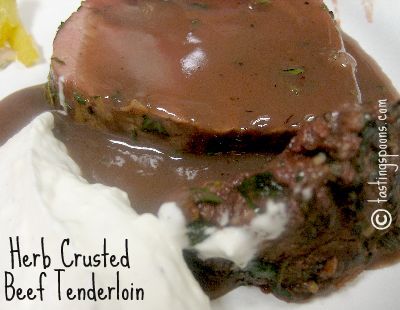

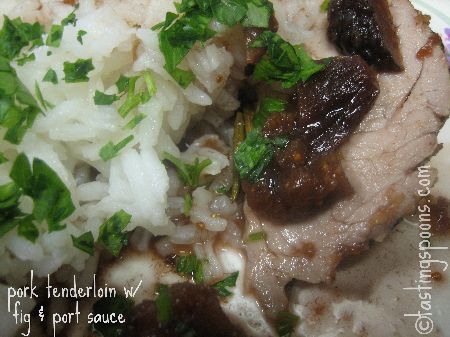
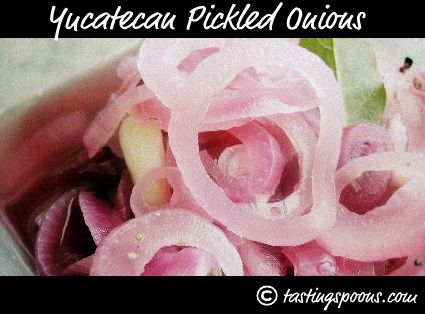

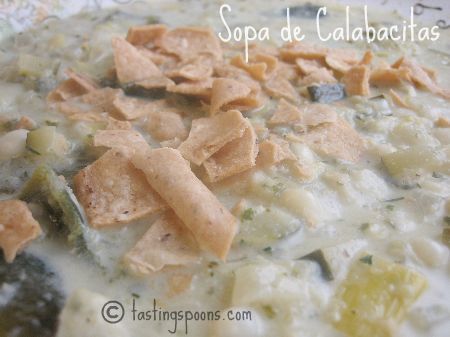
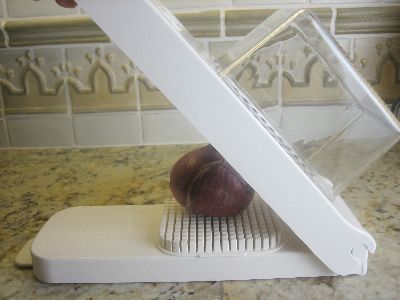
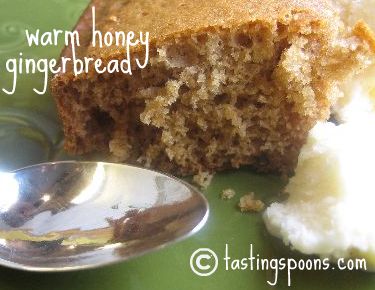

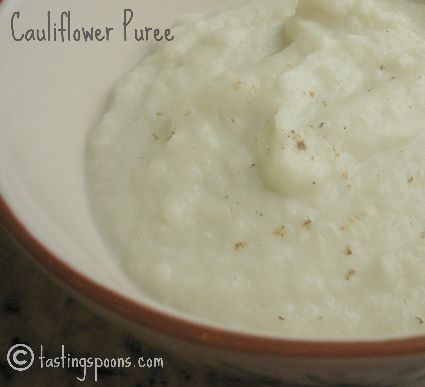
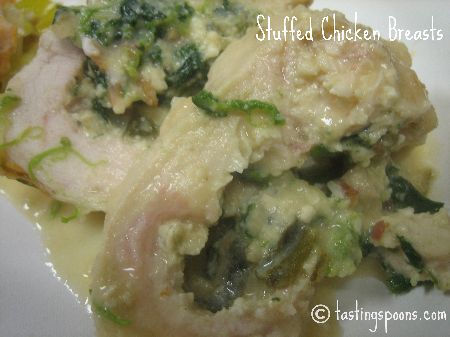
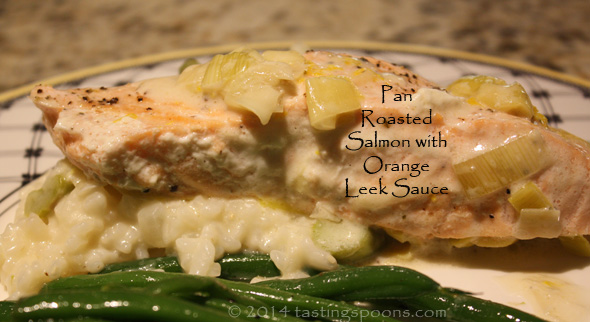
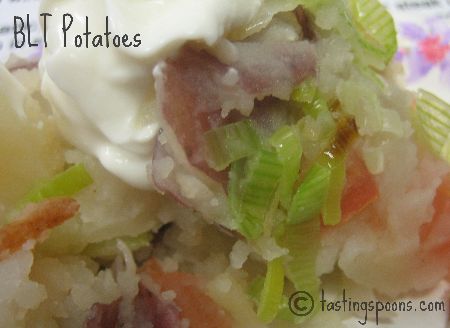
Leave a Comment!